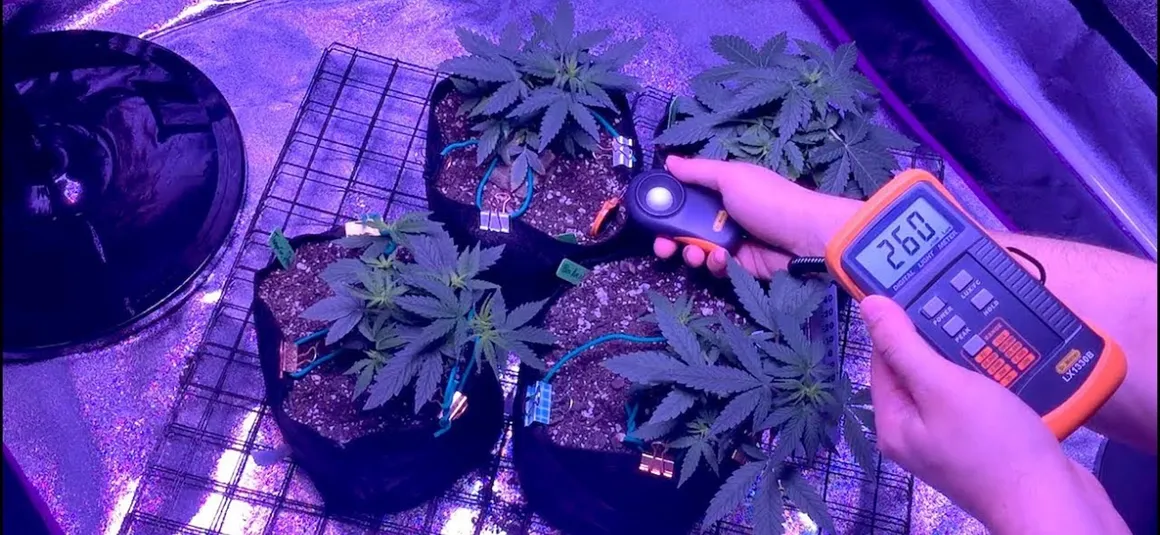Indoor planting: the perfect combination of LED growth lights and growth tents
Author: Mars Grow
Release time: 2024-04-08 15:43:58
View number: 336

In today's field of planting, technological advancements have given us more options. An increasingly popular method is the use of LED grow lights and grow tents. This combination not only increases the growth rate of plants, but also is inexpensive and unaffected by any weather.
First, let's take a look at LED growth lights. This light contains red, blue and ultraviolet rays, which can simulate natural sunlight and provide plants with the light sources they need for photosynthesis. In particular, red and blue light have a very important impact on plant growth and flowering. Red light can promote plant growth, and blue light can help plants photosynthesize. In addition, ultraviolet light can also help plants resist diseases and pests.
The growth tent is a perfect companion, as it can provide an ideal growth environment for plants. The interior of the tent is usually coated with reflective materials, which can effectively reflect the light of LED growth lights onto the plants and reduce the waste of light. In addition, the closed design of the growth tent can maintain the constant environment, such as temperature and humidity, which is very important for the growth of plants.
The most important thing is that the cost of using LED grow lights and grow tents is very low. LED bulbs have a long lifespan and low energy consumption, while grow tents only require one investment and can be used repeatedly. In addition, this planting method is not affected by any weather, whether in hot summer or cold winter, it can guarantee the normal growth of plants.
Overall, the combination of LED grow lights and growing tents provides us with a controlled, efficient and low-cost planting solution. Whether you are an experienced gardener or a beginner, you can try this planting method to make your plants thrive.
In the progress of agricultural technology, the combination of LED growth lights and growth tents has become an important part of modern indoor planting. They not only provide a solution to control the environment and promote the rapid growth of plants, but also win the love of planting enthusiasts for their energy-saving and high-efficiency characteristics.
The technological advantage of LED growth lamps is mainly manifested in their ability to emit specific wavelengths of light. These rays (red, blue and ultraviolet) are carefully selected to simulate the most beneficial parts of sunlight for plant growth. Red light (620-750 nm) can promote the growth of plant stems and the formation of flowers and fruits; blue light (450-495 nm) plays an important role in plant chlorophyll production and photosynthesis process; and ultraviolet light is also helpful for plant disease prevention and insect resistance.
As an important tool for LED growth lights, the design concept of growth tents is mainly to maximize the use of light sources and maintain a constant growth environment. The interior of tents is usually coated with reflective materials, which can effectively reflect LED lights to all corners of plants and reduce light waste. At the same time, the thermal insulation performance of tents can maintain the stability of internal temperature and humidity, so that plants are not affected by environmental fluctuations.
Of course, technological progress is not only reflected in improving efficiency, but also in its environmentally friendly and energy-saving characteristics. LED lamps have the characteristics of high efficiency, low heat and long life, which greatly improves the conversion efficiency of electricity and greatly reduces energy waste. And the one-time investment of the growth tent, long-term use, also reduces the cost of repeatedly purchasing equipment.
Overall, the combination of LED growth lamps and growth tents not only provides an efficient and controlled planting environment, but also in the long run, its advantages of low energy consumption and efficient conversion will provide strong technical support for our sustainable planting.
